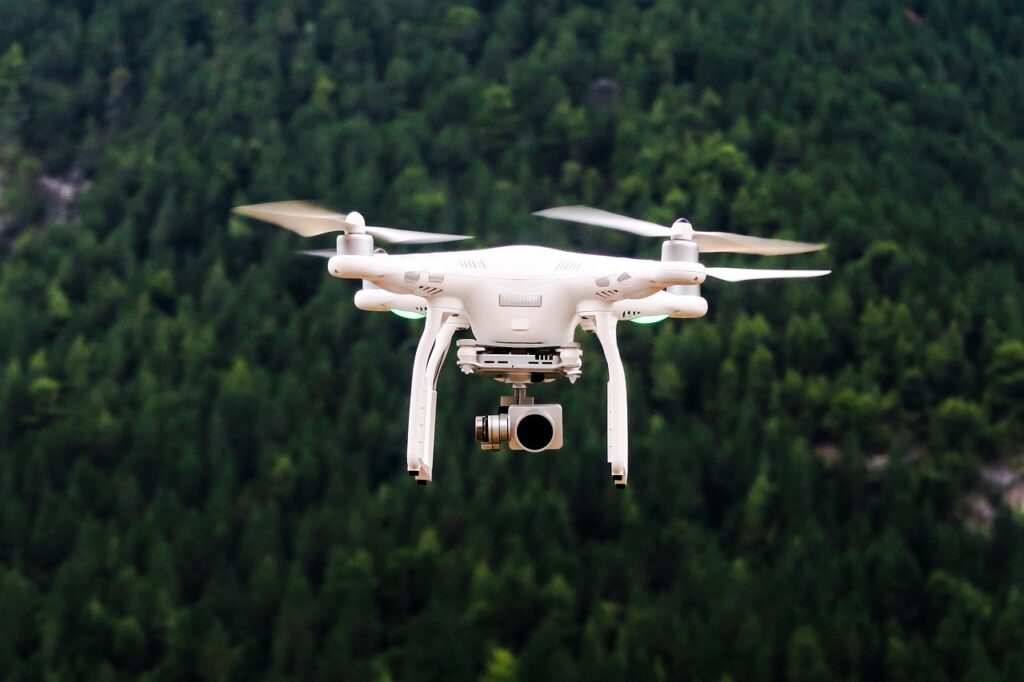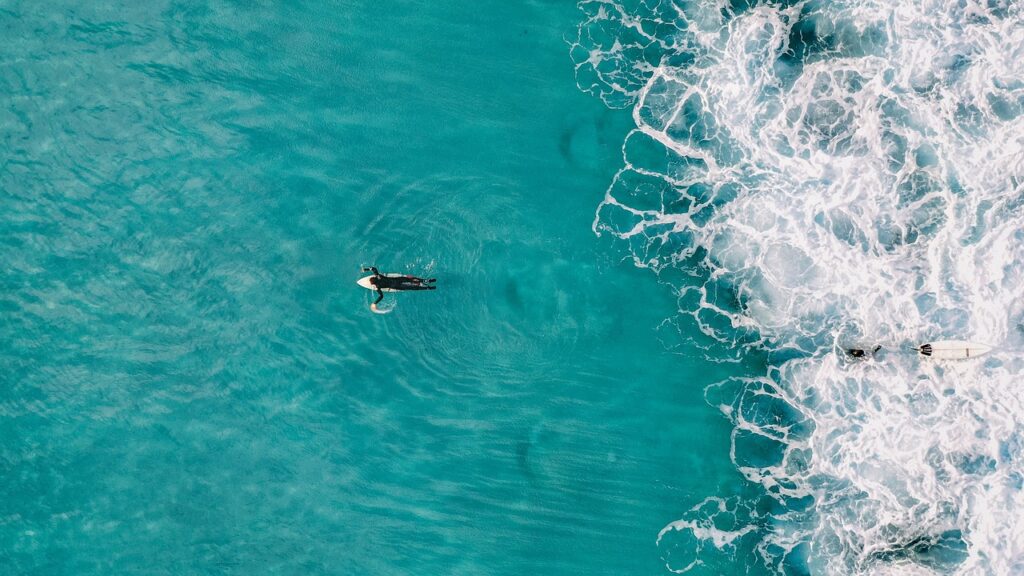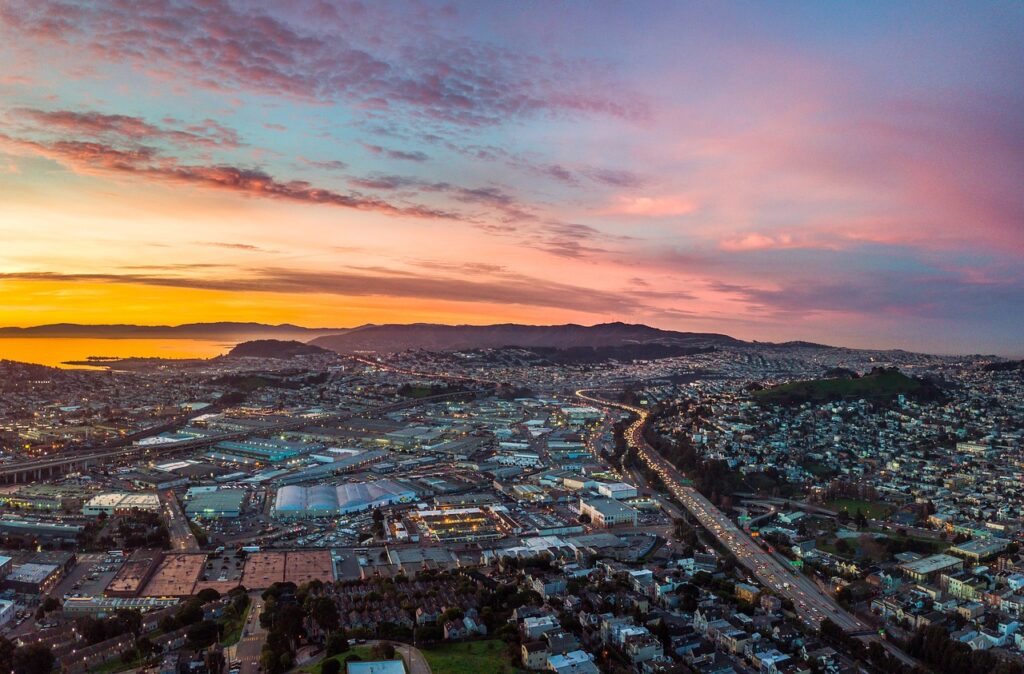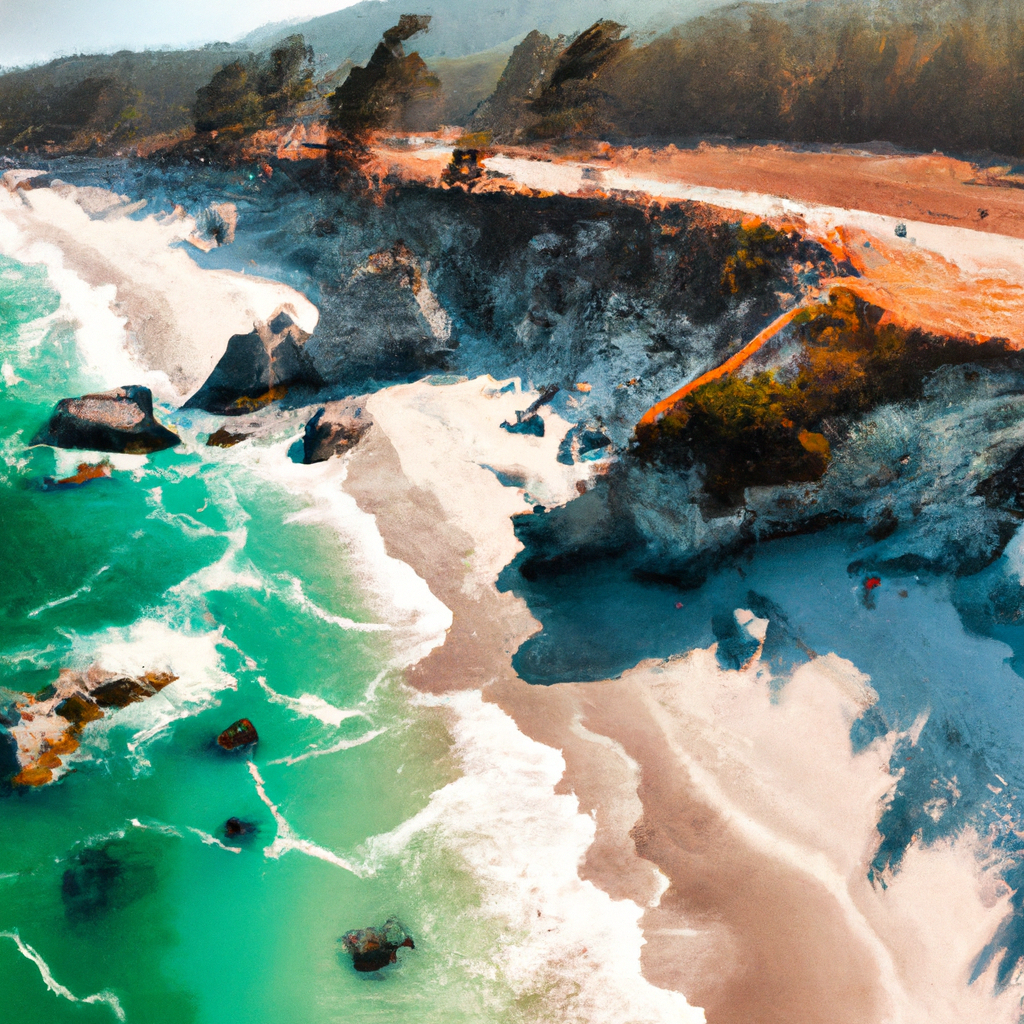If you’re looking to take your photography to new heights, literally, then drones may just be the tool you need. With their ability to soar high above the ground and capture unique aerial perspectives, drones have become a game-changer in the field of photography. Whether you’re a professional photographer looking to capture breathtaking landscapes or a hobbyist wanting to add a new dimension to your shots, drones offer endless possibilities. In this article, we’ll explore how drones can elevate your photography and unleash your creativity like never before. Get ready to see the world from a whole new perspective!
Understanding Drones
Drones have become increasingly popular in recent years, revolutionizing various industries such as photography. Before delving into the benefits and challenges of drone photography, it is important to have a basic understanding of what drones are and how they work.
What are drones?
Drones, also known as unmanned aerial vehicles (UAVs), are remotely operated aircraft that can fly autonomously or be controlled by a pilot on the ground. They are equipped with various sensors, cameras, and other advanced technology that allow them to capture aerial images and videos.
Types of drones
There are several types of drones available in the market, each catering to different needs and skill levels. Consumer drones are typically lightweight and affordable, perfect for beginners and hobbyists. Professional-grade drones, on the other hand, offer high-quality cameras, longer flight times, and advanced features suitable for professional photographers and videographers.
How do drones work?
Drones rely on a combination of flight control systems, GPS technology, and sensors to navigate and operate in the sky. These systems enable the drone to maintain stability, altitude, and direction, while also allowing the pilot to control its movements and capture stunning aerial footage.
Drone regulations and restrictions
As drone usage has increased, so have regulations to ensure their safe and responsible operation. It is vital for drone photographers to familiarize themselves with the local regulations and restrictions regarding drone flights. These regulations may include rules about flight altitudes, no-fly zones, registration requirements, and privacy concerns. By adhering to these regulations, drone photographers can enjoy their hobby or profession while respecting the safety and privacy of others.
Benefits of Using Drones in Photography
Drone photography offers a range of unique advantages that traditional photography methods cannot replicate. Here are some of the key benefits of using drones in photography:
Unique aerial perspective
One of the biggest advantages of drone photography is the ability to capture images from a high vantage point. Drones allow photographers to take aerial shots that were previously only possible with expensive helicopter or airplane rentals. This unique perspective provides a fresh and captivating view of landscapes, buildings, and events, giving photographs a sense of grandeur and scale.
Capturing stunning landscapes
Drones open up a whole new world of possibilities for landscape photography. With their ability to fly and maneuver in the air, drones can capture breathtaking shots of mountains, coastlines, forests, and other natural wonders from angles that were previously inaccessible. This enables photographers to showcase the beauty and majesty of these landscapes in a way that is both awe-inspiring and immersive.
Dynamic angles and compositions
By adding a drone to your photography arsenal, you gain the ability to experiment with dynamic angles and compositions. Drones can fly low to the ground or high in the sky, allowing photographers to capture shots from unique perspectives that were once only possible with intricate rigging or expensive equipment. This flexibility opens up a world of creative possibilities, enabling photographers to capture images that stand out and grab the viewer’s attention.
Enhancement of storytelling
Drones have the power to elevate storytelling in photography by providing a bird’s-eye view of a scene or event. Whether it’s documenting a wedding, a sports competition, or a community gathering, drones can add a sense of scale and immersion to the story being told. By incorporating aerial shots into your photographic narrative, you can create a more engaging and impactful visual experience for the viewer.
Time and cost efficiency
Traditional aerial photography often required expensive rentals, permits, and logistical planning. With drones, photographers can achieve similar results at a fraction of the cost and time. Drones are compact, portable, and easy to set up, enabling photographers to quickly get airborne and capture stunning shots. This efficiency allows photographers to spend less time on logistics and more time focusing on their creative vision.

Choosing the Right Drone for Photography
Choosing the right drone for photography is crucial to ensure optimal image quality and a smooth flying experience. Consider the following factors when selecting a drone for your photography needs:
Image quality and resolution
The image quality and resolution of the drone’s camera play a vital role in determining the visual impact of the photographs. Look for drones that offer high-resolution cameras with the ability to capture RAW images for maximum editing flexibility. Additionally, consider features such as high dynamic range (HDR) and the ability to shoot in low light conditions, as these can greatly enhance the quality of your photographs.
Camera stabilization
Stable footage is essential for producing professional-looking photographs. Look for drones that offer camera stabilization features such as gimbals or built-in image stabilization technology. These features help compensate for the drone’s movements and vibrations, resulting in smoother and more visually pleasing shots.
Flight time and range
When photographing with drones, flight time and range are crucial factors to consider. Longer flight times allow photographers to capture more footage without the need for frequent battery changes, while extended range capabilities allow for greater exploration and wider coverage. Consider drones with longer flight times and longer range capabilities to maximize your creative potential.
Ease of use and control
For beginners or casual photographers, drones with user-friendly controls and intuitive interfaces are essential. Look for drones that offer features such as automatic takeoff and landing, waypoint navigation, and obstacle avoidance to make your flying experience as smooth as possible. This allows you to focus on capturing stunning photographs without worrying about complex piloting maneuvers.
Safety features
Safety should always be a top priority when flying drones, especially in crowded areas or challenging environments. Look for drones that offer safety features such as collision avoidance systems, return-to-home functions, and geo-fencing, which help prevent accidents and protect both your drone and those around you.
Budget considerations
While it is important to invest in a capable drone that meets your photography needs, budget considerations are also important. Set a realistic budget and carefully research drones within that price range. Compare features, reviews, and customer feedback to find the best drone that offers a balance between performance and affordability.
Essential Drone Photography Techniques
While having a high-quality drone is important, mastering essential drone photography techniques is equally crucial to ensure captivating and professional-looking shots. Here are some essential techniques to enhance your drone photography skills:
Planning and scouting locations
Before taking your drone to the sky, spend time planning and scouting locations. This includes researching the area, understanding the lighting conditions, and identifying potential obstacles or restrictions. By planning ahead, you can ensure that you capture the best possible shots and avoid any unexpected surprises.
Understanding and utilizing camera settings
To maximize the image quality of your photographs, it is important to understand and utilize the camera settings on your drone. Experiment with different settings such as aperture, shutter speed, ISO, and white balance to achieve the desired look and feel of your photographs. Familiarize yourself with these settings and their impact on the final image to have better control over your photography.
Mastering flight maneuvers
Flying a drone smoothly and confidently is essential for capturing steady and visually appealing shots. Spend time practicing different flight maneuvers such as ascending, descending, hovering, and circling. By mastering these maneuvers, you can position your drone precisely and capture shots from the desired angles and perspectives.
Utilizing gimbal and stabilization
Investing in a drone with a high-quality gimbal and stabilization system can greatly enhance the visual quality of your photographs. Gimbals help stabilize the camera, minimizing unwanted movements and vibrations, resulting in smoother and more professional-looking shots. Familiarize yourself with the gimbal controls and how to adjust its settings to achieve optimal stabilization for your specific photography needs.
Photographing in different weather conditions
Drones offer the unique opportunity to capture photographs in various weather conditions. Experiment with photographing during different times of the day, in different lighting conditions, and even in adverse weather such as rain or snow. Each weather condition offers unique lighting and atmospheric effects that can add drama and interest to your photographs.
Post-processing tips and techniques
After capturing your aerial shots, the post-processing stage is where you can truly bring your vision to life. Experiment with different editing techniques and software to enhance your photographs. Adjust brightness, contrast, colors, and add creative filters if desired. Remember, post-processing is an art in itself, so take the time to develop your own unique editing style.

Safety Guidelines and Best Practices for Drone Photography
Safety should always be a top priority when operating drones, especially when combining them with photography. Follow these safety guidelines and best practices to ensure a safe and responsible drone photography experience:
Understanding flight restrictions and no-fly zones
Before taking your drone to the sky, familiarize yourself with flight restrictions and no-fly zones in your area. Some areas, such as airports, national parks, or densely populated cities, may have specific regulations or restrictions in place. Adhere to these regulations to prevent accidents and respect the safety and privacy of others.
Registering your drone
In many countries, registering your drone with the appropriate aviation authorities is a legal requirement. Registering your drone helps ensure accountability and responsible operation. Check with your local aviation authority to determine whether registration is required in your area and follow the necessary steps to register your drone accordingly.
Practicing responsible flying
Always practice responsible flying when operating your drone. Follow the manufacturer’s guidelines and recommendations for safe operation and maintenance. Respect the privacy and personal space of others by avoiding intrusive or unauthorized aerial filming. Take the time to educate yourself on proper flying techniques and procedures to reduce the risk of accidents or incidents.
Maintaining line-of-sight and Visual Observer
Maintaining a clear line-of-sight with your drone is essential for safe operation. Always keep your drone within your visual range and avoid flying it beyond your line-of-sight. In some situations, having a visual observer – someone who assists you by keeping watch for any obstacles or risks while you focus on piloting and photography – can greatly enhance the safety and efficiency of your flights.
Respecting privacy and personal space
Respecting the privacy and personal space of others is of utmost importance when flying drones. Avoid flying over private properties without permission and respect the privacy rights of individuals. When photographing events or gatherings, obtain the necessary permissions and inform participants about your aerial photography intentions. Always prioritize safety, legality, and ethical considerations when capturing photographs using your drone.
Handling emergencies and equipment failures
Despite precautions, emergencies or equipment failures can happen. Be prepared for unexpected situations by familiarizing yourself with emergency procedures and practicing emergency landings. Always have a backup plan and extra batteries or equipment on hand in case of unforeseen circumstances. By being prepared, you can minimize the impact of emergencies and safely recover your drone.
Legal Considerations for Drone Photography
As drone photography evolves, legal considerations become increasingly important for photographers. Here are some legal aspects to consider when engaging in drone photography:
Know the local regulations and laws
Each country and region has its own set of regulations and laws regarding drone operations. It is essential to familiarize yourself with these regulations, including flight altitudes, no-fly zones, permitted areas, and any licensing or certification requirements. Stay updated with any changes to the regulations to ensure compliance and avoid legal consequences.
Obtaining necessary certifications or licenses
In some countries, drone pilots may be required to obtain specific certifications or licenses to operate commercially or in certain settings. These certifications often require passing written tests and demonstrating practical flying skills. Research and adhere to the certification requirements, if applicable, to legally operate your drone for photography purposes.
Securing permits for commercial drone use
If you plan to use your drone for commercial purposes, such as offering aerial photography services, you may need to secure permits or licenses. Commercial drone use typically involves additional regulations and obligations to ensure safety and quality standards. Research the specific requirements in your area and obtain the necessary permits to legally operate your drone commercially.
Copyright and privacy issues
When capturing photographs using a drone, it is important to consider copyright and privacy laws. Ensure that you have the necessary rights or permissions to photograph individuals, private properties, or copyrighted materials. Avoid infringing on intellectual property rights or invading the privacy of others without consent. Understanding and respecting legal boundaries helps protect your work and maintain ethical standards.
Insurance coverage for drone photography
Considering the potential risks and liabilities involved in drone photography, it is advisable to have appropriate insurance coverage. Drone insurance can protect you financially in the event of accidents, damage to property, or injuries. Research and choose an insurance plan that suits your specific needs and provides comprehensive coverage for your drone photography activities.

Professional Applications of Drone Photography
Drone photography has found numerous professional applications across a range of industries. Here are some examples of how drones are being utilized in different fields:
Real estate and architecture
Drones offer a unique perspective for showcasing properties, both residential and commercial. Aerial photographs and videos provide potential buyers with a comprehensive view of a property’s layout, location, and surrounding areas. Real estate professionals and architects can utilize drone imagery to create captivating marketing materials and impress clients with immersive virtual tours.
Weddings and special events
Drones add a magical touch to weddings and other special events. Aerial shots capture the grandeur of venues, the excitement of outdoor celebrations, and the beauty of the surrounding landscapes. Professional drone photographers can create stunning cinematic footage, allowing couples and event organizers to relive their special moments from a new and captivating perspective.
Travel and tourism
Drones are revolutionizing the travel and tourism industry by capturing incredible aerial footage of destinations around the world. Tourism boards, travel agencies, and hotels are utilizing drone photography to showcase the beauty and unique features of tourist destinations. Aerial footage not only entices potential visitors but also provides a comprehensive view of attractions, landscapes, and cultural sites.
Sports and action photography
Drones are reshaping sports and action photography by capturing dynamic aerial shots during competitions and events. With their ability to maneuver quickly and follow fast-paced action, drones can capture thrilling footage of extreme sports, marathons, and other sporting events. The aerial perspective adds a new dimension to the viewing experience, increasing engagement and excitement for both participants and spectators.
Wildlife and nature photography
Drones have become powerful tools for wildlife and nature photographers. With their ability to fly silently and venture into remote and challenging environments, drones can capture intimate and non-intrusive shots of wildlife in their natural habitats. Aerial shots also allow photographers to document vast landscapes and environmental changes, raising awareness about conservation and the beauty of the natural world.
Aerial inspections and surveying
Drones offer a cost-effective and efficient solution for aerial inspections and surveying in various industries. From infrastructure inspections to land surveys and environmental monitoring, drones enable professionals to obtain detailed aerial data quickly and safely. The high-resolution imagery and thermal sensors on drones assist in identifying potential issues, assessing structural integrity, and collecting essential data for decision-making.
Challenges and Considerations in Drone Photography
While drone photography opens up exciting possibilities, it also presents unique challenges and considerations. Here are some of the key challenges that drone photographers may face:
Battery life and flight duration limitations
Drone battery life and flight duration can limit the amount of time you have to capture photographs. Most consumer drones have a flight time of around 20-30 minutes, which may not be sufficient for longer photography sessions. It is crucial to plan your flights accordingly and have spare batteries on hand to ensure uninterrupted photography sessions.
Weather conditions and wind
Weather conditions and wind can significantly impact drone flight and photography. High winds can make it challenging to stabilize the drone and capture steady shots. Rain, snow, or extreme heat can also affect the performance and safety of the drone. Always check weather conditions before flying, and avoid flying in adverse weather conditions that may pose a risk to your equipment or safety.
Navigating complex airspace
Navigating complex airspace, especially in urban or heavily populated areas, can be challenging for drone pilots. Airspace restrictions, airports, and other flight-related activities require careful planning and knowledge of any limitations or regulations. Always research and adhere to any airspace restrictions to ensure safe and legally compliant drone flights.
Interference from other wireless devices
Interference from other wireless devices, such as radio towers or Wi-Fi networks, can disrupt the communication between the drone and the remote control. This can potentially lead to loss of control or signal loss, endangering the drone and the surrounding environment. Choose an area with minimal interference when flying and avoid crowded or signal-heavy locations.
Maintenance and repairs
Regular maintenance and upkeep of your drone are essential to ensure optimal performance and longevity. This includes checking for any damage or wear after each flight, cleaning the sensors and lenses, and updating firmware regularly. Familiarize yourself with the maintenance requirements of your specific drone model and follow the manufacturer’s guidelines for repairs and replacements.
Supervision and compliance
When operating drones, it is important to be aware of your surroundings and comply with all relevant regulations and laws. This includes maintaining visual contact with your drone at all times, ensuring compliance with local privacy laws, and respecting the rights and safety of others. By exercising responsible and compliant behaviour, you can help maintain a positive image for the drone photography community.

Don’t forget there are no limits to what you can re create from your pictures
Inspiring Examples of Drone Photography
Drone photography has produced countless breathtaking and inspiring images across the globe. Here are some examples of the incredible possibilities that drones offer:
Stunning aerial cityscapes
Drone photography has allowed photographers to capture mesmerizing aerial shots of cities around the world. From iconic skylines to bustling streets, these shots offer a unique perspective that showcases the vibrant and dynamic nature of urban landscapes.
Breath-taking natural landscapes
Drone photographers have captured awe-inspiring shots of natural landscapes that were previously inaccessible. From soaring mountain ranges and winding rivers to vast deserts and lush forests, these images deliver a sense of awe and appreciation for the beauty of our natural world.
Creative and abstract compositions
Drones have enabled photographers to experiment with creative and abstract compositions that push the boundaries of traditional photography. By exploring unconventional angles and viewpoints, drone photographers have produced mesmerizing images that challenge our perception and ignite our imagination.
Emotion-evoking storytelling
Stories can be told from a new perspective with the help of drones. Aerial shots can enhance the emotional impact of a photograph, evoking feelings of wonder, serenity, or even drama. By skillfully incorporating drone shots into their storytelling, photographers can create compelling narratives that resonate with viewers on a deeper level.
Unique perspectives and angles
Drones offer photographers the ability to capture unique perspectives and angles that were once only possible with expensive equipment or extensive planning. These shots provide a fresh and captivating view of familiar subjects, stimulating curiosity and inviting viewers to see the world from a different angle.
Tips for Enhancing your Drone Photography Skills
To enhance your drone photography skills and create captivating images, consider the following tips:
Experiment with different angles and heights
Drones offer the creative freedom to capture photographs from various angles and heights. Experiment with different perspectives to add depth and interest to your shots. Fly low for close-up shots, ascend for bird’s-eye views, or orbit around a subject to capture it from all angles. The possibilities are endless, so let your creativity soar.
Incorporate foreground and background elements
To add depth and context to your images, incorporate foreground and background elements in your compositions. This can be achieved by including objects such as trees, buildings, or people in the foreground, while capturing the main subject in the background. This technique not only adds visual interest but also provides a sense of scale and context to your photographs.
Play with lighting and shadows
Lighting plays a crucial role in photography, and drone photography is no exception. Pay attention to the direction and intensity of natural light, as well as the resulting shadows and highlights. Experiment with different times of the day to capture the golden hour or the dramatic lighting during sunrise or sunset. By understanding and utilizing lighting effectively, you can create stunning and visually compelling photographs.
Practice compositional techniques
Composition is a fundamental aspect of any photograph, including drone photography. Learn and practice compositional techniques such as the rule of thirds, leading lines, symmetry, and balance. These techniques help guide the viewer’s eye and create visually pleasing and harmonious compositions.
Learn from other drone photographers
Look to other drone photographers for inspiration and learning opportunities. Join online communities, participate in forums, and follow renowned drone photographers on social media. Observing and learning from others can inspire new ideas, help refine your techniques, and broaden your understanding of the endless possibilities of drone photography.
Push the limits of your drone’s capabilities
Explore the full capabilities of your drone by experimenting with its features and settings. Try different flight modes, utilize intelligent flight modes such as follow me or orbit, and experiment with your camera’s settings to capture unique and visually striking shots. By continuously challenging yourself and your drone, you can unlock new creative potential and take your photography skills to new heights.
In conclusion, drone photography offers a unique and captivating way to capture stunning images from the sky. With a basic understanding of drones, a suitable equipment choice, and the right techniques, you can elevate your photography to new heights. Whether for personal or professional use, the benefits and possibilities of drone photography are vast, allowing you to capture breathtaking shots, enhance storytelling, and explore new perspectives. Embrace the opportunities that drones provide and let your creativity soar in the aerial realm. Happy flying and happy photographing!


